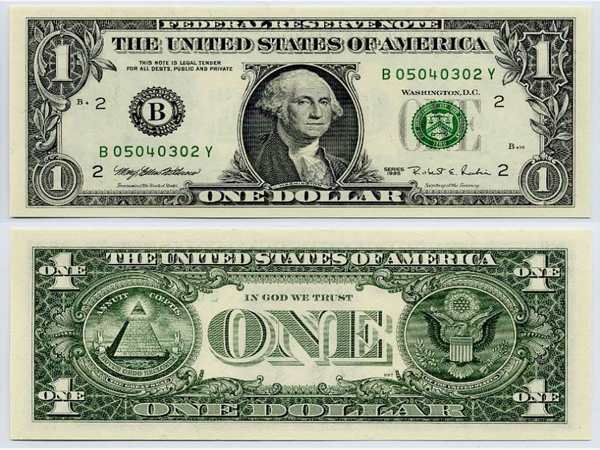Next time you pull out a dollar bill, prepare to be amazed by the hidden details and symbols you might never have noticed before. Beyond its face value, the dollar bill is packed with intriguing features, secret messages, and fascinating history. Let’s dive into what makes this everyday item a remarkable piece of currency.
The Value of a Dollar Bill: More Than Meets the Eye
The value of a dollar bill may seem straightforward, but its origins are rooted in a complex system. Since 1973, the dollar has been “fiat” money, meaning it’s not backed by physical commodities like gold or silver. Instead, its value derives from the government’s decree that it is legal tender for all debts. This designation ensures that dollars are accepted for payment of debts, a critical aspect of its functionality. Each bill costs the government approximately 6.4 cents to produce.
The Unique Composition of Dollar Bills
Ever wondered what your dollar bill is made of? Unlike ordinary paper, bills are crafted from a special blend of linen and cotton, which makes them durable and resistant to tearing. If you examine a bill closely, you’ll notice small red and blue silk fibers woven into the fabric. These fibers are an anti-counterfeit measure designed to make imitation more difficult. These tiny threads are visible in the white areas of the bill and look like small bits of lint that can’t be scratched off.
Decoding the Symbols on Your Dollar Bill
- The Federal Reserve Seal: Each dollar bill features a black seal with a large letter in the center. This letter represents the Federal Reserve Bank that issued the bill. For example, “A” stands for Boston, “B” for New York City, and so on. The letter also corresponds to a number on the bill. For instance, if your bill has the letter “K,” it indicates that it was issued by the Dallas Fed, and “K” is the eleventh letter of the alphabet.
- Hidden Owls or Spiders?: Some eagle-eyed observers claim to see a tiny owl or spider next to the large “1” on the upper right side of the bill. This detail is part of the intricate border design, though it is likely just a variation in the pattern rather than a deliberate symbol. Theories abound, with some suggesting Masonic connections or anti-counterfeit purposes.
The Great Seal of the United States
The back of the dollar bill prominently features The Great Seal of the United States, which was approved by the Founding Fathers in 1782. Ben Franklin, John Adams, and Thomas Jefferson were instrumental in its design. This seal embodies the nation’s values and historical foundations:
- Annuit Coeptis: Translated as “God has favored our undertakings,” this Latin phrase reflects the belief among many Founders that divine intervention supported the creation of the United States.
- Novus Ordo Seclorum: Meaning “New order of the ages,” this phrase signifies the beginning of a new American era starting in 1776, the year of the Declaration of Independence.
- MDCCLXXVI: The Roman numerals on the base of the pyramid stand for 1776, aligning with the year of American independence.
- The Unfinished Pyramid and Eye of Providence: The pyramid symbolizes strength and duration, though its unfinished state is believed to represent the ongoing development of the nation. The “Eye of Providence,” or the glowing eye above the pyramid, is a symbol of divine oversight. Contrary to popular belief, this symbol predates the Freemasons and has roots in ancient Egypt.
- E Pluribus Unum: This phrase, meaning “Out of many, one,” reflects the unity of the original thirteen colonies forming a single nation.
- The Bald Eagle: Chosen for its American roots, the bald eagle holds arrows and olive branches in its talons, symbolizing war and peace.
Fun Activities with Dollar Bills
Make learning about dollar bills a fun activity for you and your kids with these engaging ideas:
- Track Your Bills: Visit the website Where’s George? to track the journey of your dollar bills. By entering the serial number, you can see where your money has traveled and follow its path through various transactions.
- Dollar-Bill Poker: Turn the serial numbers on your dollar bills into a game of poker. Treat the numbers like playing cards, create your best hand, and see who has the highest-ranking combination.
The dollar bill, with its hidden details and historical significance, is more than just a medium of exchange. It’s a miniature work of art and a snapshot of American history. So next time you pull one out, take a closer look and appreciate the intriguing elements embedded in this everyday item.

